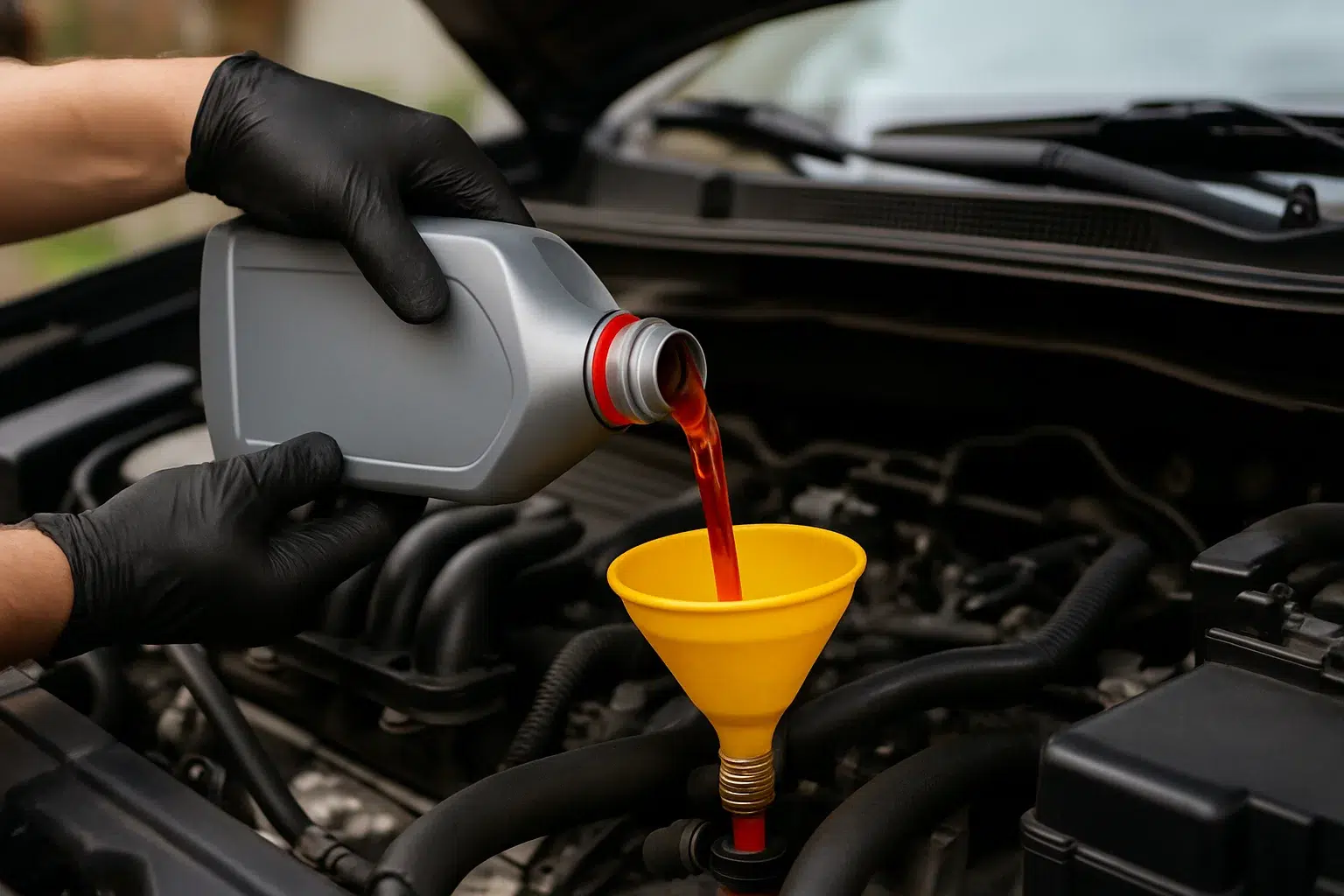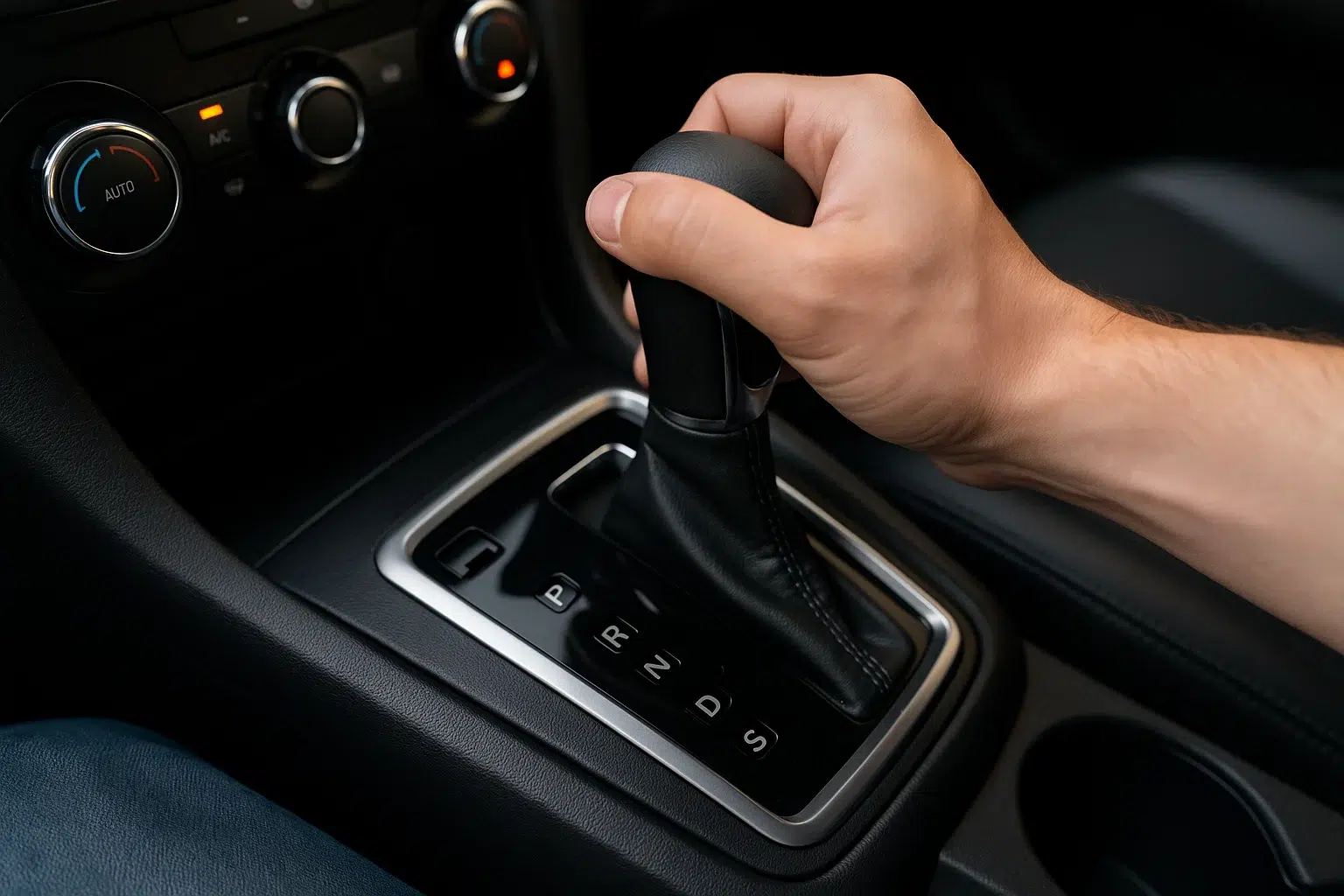An automatic transmission is one of the most helpful inventions in the automotive world because of easy gear changes, enhanced driving comfort, and even driving convenience. However, every automatic transmission system does need the proper maintenance. Something as simple as checking if the transmission fluid is at the proper level is fairly crucial.
If you are having trouble with the question, “how to put automatic transmission fluid in car,” this guide will help you understand the entire process step by step. Each section will explain how to identify low fluid levels, safety concerns, required tools, and give some expert advice. We’ll help you get the transmission back in shape!
What is Automatic Transmission Fluid?
ATF or Automatic Transmission Fluid is a type of oil designed to lubricate parts of a car’s transmission, help in the transfer of power from the engine to the transmission, and cool down the system. Fluid in the system can leak or dwell, affecting the ATF’s system performance.
Like engine oil, ATF also has different roles which are:
- To cool down the transmission parts
- Serve as a hydraulic spacer
- Allow effortless gear changes
- Lubricate the internal components
For any car with an Automatic Transmission in Car, monitoring ATF levels is as crucial as checking the engine oil levels.
Signs Your Car Needs Transmission Fluid
Before you learn how to put automatic transmission fluid in car, you need to understand when it is needed. Here are the common signs:
- Delayed or hard gear shifts
- Slipping transmission
- Unusual sounds while shifting
- Burning smell from under the hood
- Warning light on dashboard
- Visible leaks underneath your car
All these signs indicate that if not repaired immediately, it will lead to costly repairs as well as a drop in performance.
Tools and Materials You’ll Need
To add automatic transmission fluid, you don’t need a big tool kit. Here are the basics:
- Automatic transmission fluid (check your user manual for the correct type)
- Long-neck funnel
- Clean cloth or paper towels
- Jack and jack stands (if necessary)
- Gloves (optional but recommended)
Some vehicles may require the engine to be running during this procedure, especially if they have sealed systems. Always refer to your car’s service manual.
How to Put Automatic Transmission Fluid in Car: Step-by-Step Guide
For practical purposes, this process will be described in simple steps below:
Step 1: Park on a Level Surface
Before performing any checks or adding fluids, make sure your car is parked on a level surface. Apply the parking brake and then start the engine. Most cars require the engine to be running and the car in “park” mode before you can perform any checks or add fluids.
Step 2: Locate the Dipstick
Open the hood and locate the transmission fluid dipstick in the engine bay – it should be at the rear of the engine bay. It often has a shiny handle that says “Transmission” or “ATF.”
Note: Some newer vehicles do not have a dipstick for sealed transmissions. These will require professional service or another method to check the fluid level.
Step 3: Check the Fluid Level
Checking the dipstick should be done in several steps. First, wipe the dipstick, then reinsert it and pull it out again to check the level. The dipstick will be marked “Full” and “Add” to make it easy to spot. If the level is below the mark, it must be refilled.
Step 4: Add Transmission Fluid
Use a long-necked funnel to pour fluid into the dipstick tube. Slowly add the recommended amount of fluid, starting with a half-quart. Check the dipstick after the first half-quart to assess the level.
Beware of the risk of overfilling the dipstick tube with fluid. Too much fluid can be as harmful as too little fluid.
Step 5: Shift Through the Gears
With the engine running, apply the brake and then shift the gear lever to all gears, “P”, “R”, “N”, “D”, etc. Next, shift back to “Park” to make sure the fluid is circulating.
Check the fluid level again. If it is not at “Full”, add more.
Choosing the Right Automatic Transmission Fluid
Using the wrong type of ATF can cause gear shifting problems or even permanently damage the transmission. Fluid types vary from vehicle to vehicle, and even by brand and region. Check:
- The owner’s manual
- The sticker under the hood
- The manufacturer’s website or call the service center.
This is especially important for vehicles with adaptive cruise control and newer driving systems as these may require a specific type of fluid to work properly.
Safety Precautions to Consider
When learning how to put automatic transmission fluid in car, it’s important to follow safety precautions:
- Make sure you are on level ground
- Avoid working around a hot engine.
- Do not open a closed transmission system without training.
- Old fluid should be disposed of in certified facilities.
Both transmission fluid and ATF can be flammable, so it’s best to avoid contact and wear gloves if possible.
How Often Should You Check or Add Transmission Fluid?
Most manufacturers recommend checking your transmission fluid every 30,000 to 60,000 km or every time you change the oil. Some vehicles even have lifetime transmission fluid, although most mechanics recommend changing it after 100,000 km.
Also, regular driving activities such as driving to an automatic car wash or heavy towing can accelerate fluid degradation. Monitor your fluid levels more closely in such situations.
Can You Drive With Low Transmission Fluid?
Technically, yes, you can drive with low transmission fluid but only for a very short distance. Low fluid levels can lead to:
- Reduced fuel economy
- Overheating of the transmission
- Irreparable damage to internal components
These problems can indirectly affect the car mileage, as your engine and transmission have to work overtime, which increases the amount of fuel used.
Common Mistakes to Avoid
When adding ATF, avoid these common errors:
- Overfilling: This can lead to irregular transfer of fluids and may even cause leakage.
- Using the wrong fluid type: This will result in destruction of seals and internal transmission components.
- Not shifting through the gears: Uneven fluid distribution results in damage to components.
- Neglecting leaks: Pay attention to oil leaks under the car. A car leaking oil or transmission fluid must be repaired right away.
Understanding the Importance of Fluid Health
Transmission fluid should have a sweet smell and a bright red or pink color. If it is dark or brown and smells burnt, it not only needs to be changed, but it also needs to be completely replaced rather than just toppled over.
Burnt fluid can cause problems like car smoking but not overheating, which is a classic sign of strained transmission parts.
Transmission Fluid vs Engine Oil: What’s the Difference?
Transmission fluid and engine oil are widely considered to be the same, but in fact they are quite different:
| Feature | Engine Oil | Transmission Fluid |
| Color | Golden or brown | Red or pink |
| Function | Lubricates the engine | Lubricates hydraulic and gears |
| Change interval | 5,000 to 10,000 km | 30,000 to 100,000 km |
| Check level with | Engine off | Engine running mostly |
Confusing the two could result in serious damage to the transmission or engine.
What If There’s No Dipstick?
With many modern cars, sealed transmissions are common, which means they can’t be easily checked or filled without specific equipment. In the case of these sealed transmissions, they can be checked for:
- Vehicle lift
- Temperature-based measurement
- Special service tools
If there is no dipstick in your car, it is advised to see a certified mechanic or a dealership in case there is doubt.
Additionally, if your Car Heater Not Working, it can signify more serious engine fluid problems. Issues not limited to coolant but could be poor transmission coolant as well.
What to Do If You Overfill Transmission Fluid
Too much of anything can cause problems, just like running low on fluid. These are some symptoms of overfilling:
- Transmission slipping
- Erratic shifting
- Fluid leaks
- Whining noises
For these cases, you will have to drain some fluid either by taking off the transmission pan or by using a vacuum pump. If you are not comfortable, it is best to seek help.
Fluid leaks can lead to a car exhaust smell, especially if it leaks onto the hot exhaust system.
When to Seek Professional Help
Doing everything yourself is not always the best option, some situations are better suited for experts:
- Sealed transmissions
- Burnt-smelling or dark fluid
- Visible leaks from transmission
- Shuddering or hesitation while driving
If you’re having consistent issues with starting your vehicle in addition to these transmission troubles, your electric system or car Starter might need some attention too.
Conclusion: Keep Your Transmission Healthy
Learning how to put automatic transmission fluid in car parts is a must for any car owner. It will enhance the performance of the vehicle, prolong the transmission system’s life, improve gear engagement, and guarantee a better riding experience.
Always monitor your fluid levels, use the correct ATF, and be careful of warning signs. For cars with sealed systems or ongoing problems, topping off fluid is often simple, but do not hesitate to consult a professional.
Maintaining your transmission fluid also helps to maintain other systems within the vehicle. For example, if you ever asked yourself do Automatic Cars have Clutch, well, the answer is kind of. Automatic cars do not use a manual clutch but rather a torque converter and both depend on a well-maintained fluid system.
Vehicles with complex systems use cruise control in cars, or advanced steering wheel controls and depend on a well-maintained transmission to function optimally.
Lastly, if you are looking for unique opportunities in the automotive world, such as wanting to be a pilot car driver, knowledge of vehicle maintenance such as transmission maintenance is very useful.
In case you have read until this point, then your next step should be checking your transmission fluid so that the axles in a car and transmission systems are well maintained.

I am Tushar Balchandani, founder of Car Info Expert and someone who has been working extensively in the car industry as a car expert for 15 years. My aim is to provide useful truthful and reliable information to the readers based on my real experiences and hands-on experience. From buying tips to maintenance guides, I help readers make confident car-related decisions.




